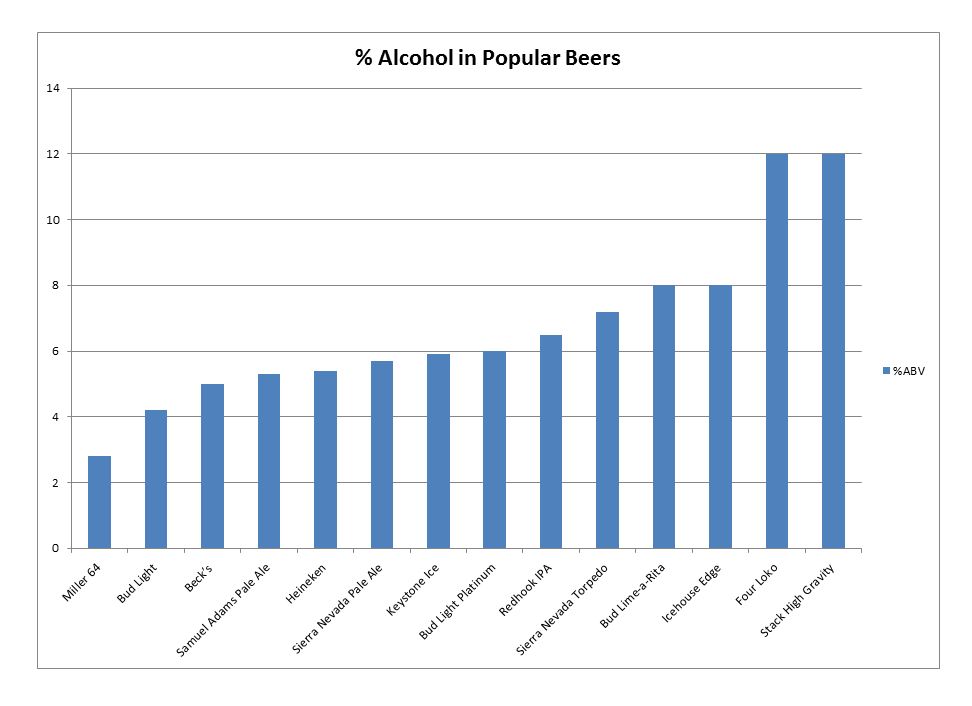
Press Release
How Much Alcohol Is in Your Drink? Stronger Beers and Wines Make It Harder to Tell
Consumers often don’t know how much alcohol they are actually drinking, according to “The Blurring of Alcohol Categories,” a new report from the Public Health Institute’s Alcohol Research Group (ARG) published by the National Alcoholic Beverage Control Association. Many new beer and wine products have increased alcohol content—blurring what were once clear lines between the alcohol content of beer, wine and spirits.
-
Focus Areas
Alcohol, Tobacco, Drugs & Mental Health -
Expertise
Research – Surveillance -
Programs
Alcohol Research Group
Improved Labeling, Education Needed, Says New Report
October 15, 2013 (Oakland, CA)—Consumers often don’t know how much alcohol they are actually drinking, according to “The Blurring of Alcohol Categories,” a new report from the Public Health Institute’s Alcohol Research Group (ARG) published by the National Alcoholic Beverage Control Association.
Many new beer and wine products have increased alcohol content—blurring what were once clear lines between the alcohol content of beer, wine and spirits. Adding to the confusion, beer and wine brands aren’t required to list alcohol content—some do so voluntarily while others do not.
As a result, many drink more alcohol than they realize and may unwittingly exceed the legal blood alcohol level for driving – increasing their potential danger of car crashes and harm to their safety and health, the report explains. Those who wish only to drink alcohol moderately might overdrink without knowing it.
The report calls for improving alcohol labeling, so people can track their intake and keep themselves from unknowingly drinking more than they mean to. “If the goal is for people to drink responsibly, we need more informative labeling from the producers and education regarding drink alcohol content, ” said ARG scientist William Kerr, lead author of the report. “Without consistent labeling, someone may be drinking a beer that has twice the alcohol content that they think it has.”
Historically, the alcohol content for light beer has been 4.2% alcohol by volume (ABV), and for standard beer, 5% ABV. Table wine is usually defined as ranging from 7% to 14% ABV. Today, though, Bud Light Platinum weighs in at 6%—nearly 50% higher than Bud Light at 4.2% ABV. Four Loko packs a hefty 12% ABV, which is about the average strength that consumers expect from wine. Meanwhile, strong craft or import beers are ranging from 6% to 12% ABV. And many wines now exceed 14% ABV.
Alternative drink types like ciders are increasingly popular, and because their alcohol content tends to be a little higher than beer, ciders don’t fit neatly into any category for alcohol content. Smirnoff Ice is linked to the distilled spirits brand name but is in fact a malt beverage with an alcohol content more typical of beer.
Many states have further muddied the waters by changing the alcohol limits they use to define beer for regulatory purposes. The limits, for states that have them, now range from 4% ABV in Utah to 15% in North Carolina.
Spirits manufacturers began creating flavored malt beverages, beer-like malt products that remove the beer flavor and add fruit, soda and sometimes spirits, in the 1980s, in order to capture the regulatory advantages that beer enjoys: lower taxes, better placement in stores, wider availability, and the ability to advertise on television.
Recently, though, spirits and wine sales have been growing in relation to beer, and beer producers, too, are now creating flavored beers that often have higher alcohol content.
“A one or two percentage point difference in alcohol content between beer brands may not sound like much, but proportionally it’s pretty big and the difference adds up over a number of drinks,” Kerr said.
The National Alcohol Beverage Control Association is the national organization that represents states that control the distribution and sale of alcohol within their jurisdictions.
###
About the Alcohol Research Group
ARG, a program of the Public Health Institute, is a national and international leader in alcohol research and is home to a National Institute on Alcohol Abuse and Alcoholism-sponsored National Alcohol Research Center. ARG focuses on better understanding the public health implications of alcohol use patterns and associated problems that include alcohol use disorders, alcohol-related health services research, and analyses of alcohol policy and its impacts.
About the Public Health Institute
The Public Health Institute, an independent nonprofit organization, is dedicated to promoting health, well-being and quality of life for people throughout California, across the nation and around the world.
More Updates
Work With Us
You change the world. We do the rest. Explore fiscal sponsorship at PHI.
Support Us
Together, we can accelerate our response to public health’s most critical issues.
Find Employment
Begin your career at the Public Health Institute.




